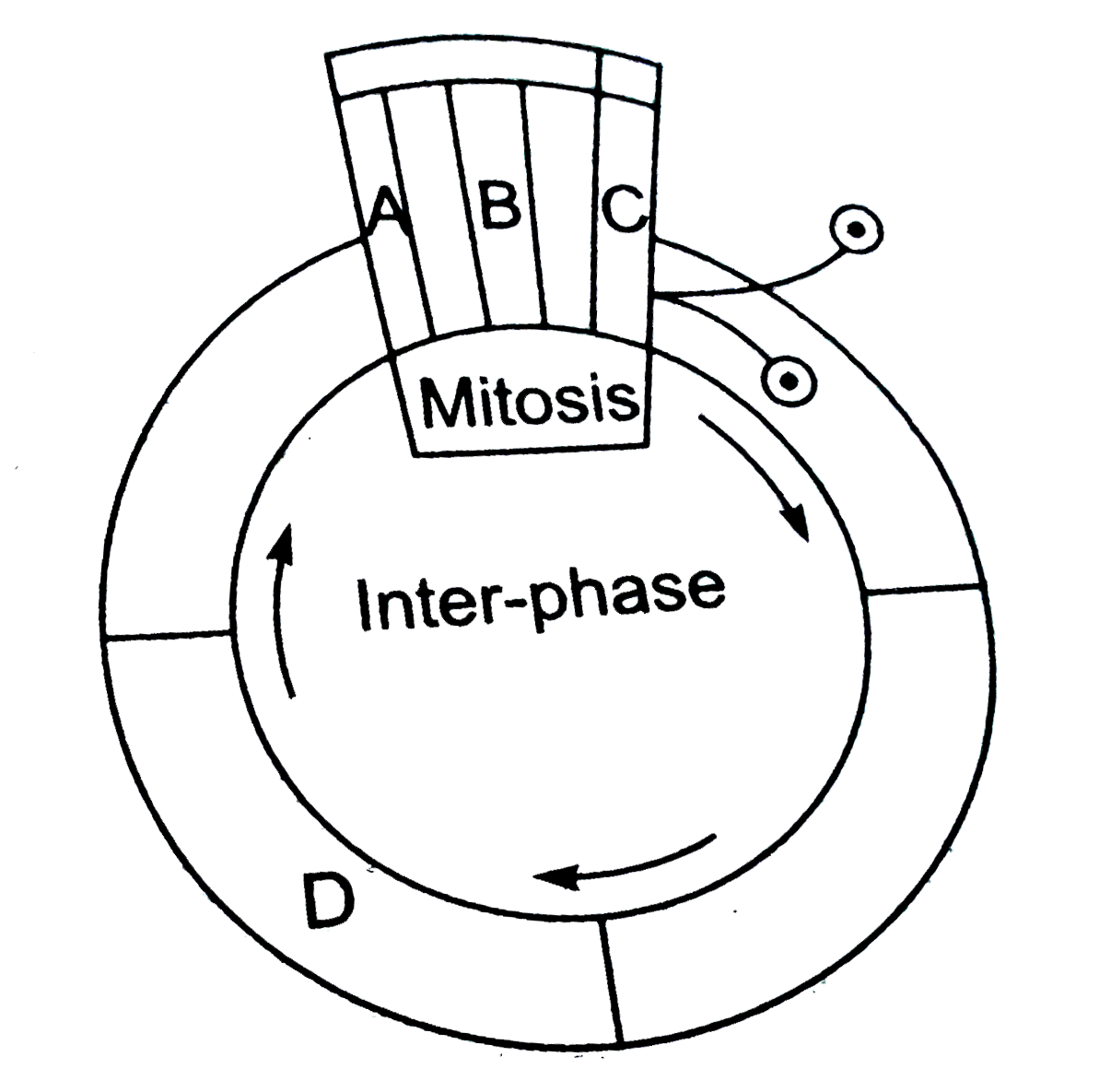Give a schematic repesentation of oogesis in humans . Mention the number of chhromosomes at each stage .Correlate the life phases of the individual with the stage of the process .
Step-by-Step Text Solution for Oogenesis in Humans
1. Oogonia Formation:
- Description: Oogonia are the initial germ cells in the ovaries of females. They are diploid (2n) and undergo mitosis to increase in number.
- Chromosome Number: 46 chromosomes (2n).
- Life Phase: This stage occurs during fetal development.
2. Primary Oocyte Formation:
- Description: Oogonia undergo mitosis and differentiate into primary oocytes. Each primary oocyte begins meiosis but stops at prophase I until puberty.
- Chromosome Number: 46 chromosomes (still diploid, 2n).
- Life Phase: This stage is reached before birth and remains until puberty.
3. Secondary Oocyte Formation:
- Description: At puberty, during each menstrual cycle, a primary oocyte completes meiosis I, resulting in one secondary oocyte and one polar body (which typically degenerates).
- Chromosome Number: 23 chromosomes (haploid, n) for the secondary oocyte.
- Life Phase: This occurs during the reproductive years of a female.
4. Ovum Formation:
- Description: If fertilization occurs, the secondary oocyte completes meiosis II, resulting in one ovum and a second polar body.
- Chromosome Number: 23 chromosomes (haploid, n) for the ovum.
- Life Phase: This occurs during the reproductive years, specifically at the time of fertilization.
Schematic Representation of Oogenesis
Oogonia(46chromosomes,2n)⏐↓(Mi→sis)PrimaryOocyte(46chromosomes,2n)⏐↓(MeiosisIatpuberty)SecondaryOocyte(23chromosomes,n)+PolarBody⏐↓(Iffertilized,MeiosisII)Ovum(23chromosomes,n)+SecondPolarBody
Correlation of Life Phases with Oogenesis Stages
- Fetal Development: Formation of oogonia and primary oocytes.
- Puberty: Activation of primary oocytes to secondary oocytes during menstrual cycles.
- Reproductive Years: Completion of oogenesis upon fertilization leading to ovum formation.
- Description: Oogonia are the initial germ cells in the ovaries of females. They are diploid (2n) and undergo mitosis to increase in number.
- Chromosome Number: 46 chromosomes (2n).
- Life Phase: This stage occurs during fetal development.
- Description: Oogonia undergo mitosis and differentiate into primary oocytes. Each primary oocyte begins meiosis but stops at prophase I until puberty.
- Chromosome Number: 46 chromosomes (still diploid, 2n).
- Life Phase: This stage is reached before birth and remains until puberty.
- Description: At puberty, during each menstrual cycle, a primary oocyte completes meiosis I, resulting in one secondary oocyte and one polar body (which typically degenerates).
- Chromosome Number: 23 chromosomes (haploid, n) for the secondary oocyte.
- Life Phase: This occurs during the reproductive years of a female.
- Description: If fertilization occurs, the secondary oocyte completes meiosis II, resulting in one ovum and a second polar body.
- Chromosome Number: 23 chromosomes (haploid, n) for the ovum.
- Life Phase: This occurs during the reproductive years, specifically at the time of fertilization.
- Puberty: Activation of primary oocytes to secondary oocytes during menstrual cycles.
- Reproductive Years: Completion of oogenesis upon fertilization leading to ovum formation.
Similar Questions
Knowledge Check
At what stage of life is oogenesis initiated in a human female?
AAt pubertyBDuring menarcheCDuring menopauseDDuring embryonic development
(a)Give a schematic representation of spermatogenesis in humans .
(b) At which stage of life does gametogenesis begin in human male and female respectively ?
(c )Name the organs where gametogensis gets completed in male and female respectively.
View SolutionConsider the following four statements (I - IV) related to cell cycle, and select the correct option stating them as true [T] and false [F]. i. G1 phase is a metabolically active stage of the cell cycle. ii. Interphase is the phase of actual cell division. iii. The number of chromosomes doubles in S-phase. iv. The cells that do not divide further exit the G1 - phase to enter a quiescent stage.
View SolutionGiven below is a schematic break up of the phases/stages of cell cycle which one of the following is the correct indication of the stage/phase in the cell cycle

View SolutionGiven below is a schematic break-up of the phases/stages of cell cycle. Which one of the following is the correct indication of the stage/phase in the cell cycle?

View SolutionGiven below is a schematic break-up of the phases/stages of cell cycle. Which one of the following is the correct indication of the stage/phase in the cell cycle?

View SolutionAt what stage of life is oogenesis initiated in a human female?
View SolutionIf there are 30 chromosomes in G1 -phase, then what will be number of bivalents in zygotene stage ?
View Solution
